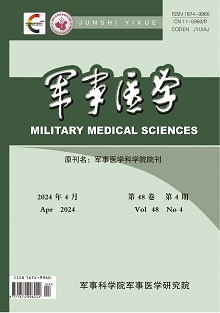Original articles
CAO Hu, WANG Changyao, SHAO Jingyuan, LIU Jie, WANG Yihao, HE Zhichao, HU Shunying, WANG Hua
Objective To explore the effects of the same dose of fractionated radiation and single radiation on radiation-induced heart damage in mice. Methods Twenty-one wild-type C57BL/6J mice were randomly divided into the normal group, fractionated radiation group and single radiation group. 18 Gy X-ray, via fractionated (3 Gy/time, 6 times) radiation or single radiation, was used to establish a radiation-induced heart damage model. The concentrations of myocardial enzyme damage markers (creatinekinase (CK), creatinekinase-MB (CK-MB), lactate dehydrogenase (LDH) and LDH1) and peripheral serum ions (K+, Ca2+, Fe2+ and Cl-) were detected by an automatic biochemical analyzer at day 7 and 28 after radiation. Ultrasound was used to detect and analyze the cardiac function of mice at day 28 after radiation, including the left ventricular ejection fraction (EF), left ventricular fractional shortening (FS), left ventricular end-diastolic volume (LVEDV), left ventricular mass (LV mass) and left ventricular end-systolic volume (LVESV). The opening of the mitochondrial permeability transition pore (mPTP) and changes of mitochondrial membrane potential of myocardial cells were observed using a laser confocal microscope. The ultrastructure of myocardia was observed under a transmission electron microscope (TEM) and cardiac fibrosis was checked by Masson staining. The atherosclerosis of the aorta was examined by gross oil red staining. Real-time quantitative PCR (RT-qPCR) and Western blotting were performed to detect the expressions of apoptosis-related genes and proteins, B cell lymphoma-2-associated X protein(BAX) and casepase-3. Results Seven days after 18Gy X-ray irradiation, the expression levels of CK, CK-MB, LDH and LDH1 in the single radiation group increased significantly or trended up, while only CK and LDH1 in the fractionated irradiation group continued to increase. Twenty-eight days after radiation, the expression levels of 4 enzymes in myocardial zymogram were increased by both radiation methods. Seven and twenty-eight days after radiation, the concentrations of serum ions K+, Fe2+, Ca2+ and Cl- were significantly decreased by both radiation methods that could lead to the decrease of EF and FS, and the increase of LV mass, LVEDV and LVESV. Single radiation made more difference to EF and FS, and the difference between the two groups was statistically significant. Both methods could decrease the mPTP and mitochondrial membrane potential, especially single radiation, and there was significant difference between the two groups. The results of TEM showed that the mitochondrial cristae of myocardial cells decreased and vacuolated, and the myocardial fiber bundles became thicker after X-ray radiation. Masson staining showed that collagen fibers were deposited in the heart tissue of mice after X-ray irradiation, particularly in the single radiation group. Gross oil red staining of the aorta showed that both methods could damage the aorta of mice, and the area of atherosclerotic plaques in the single radiation group was larger, which was statistically different from that of the fractionated radiation group. The results of RT-qPCR and Western blotting showed that X-ray radiation could increase the expression levels of apoptosis-related BAX and caspase-3 in cardiac tissue, especially in the single radiation group. The mRNAexpressions of BAX and caspase-3 increased more significantly in the single radiation group. Conclusion Both fractionated radiation and single radiation at the same dose can cause heart damage, so they can be used to establish a radiation-induced heart damage model of mice. Single radiation can cause more significant damage to the heart. Different modeling methods can be selected as required.
